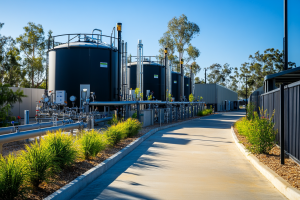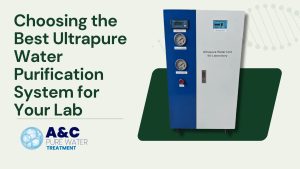Ion-exchange resins play a crucial role in water treatment processes, particularly in removing ions and impurities from water. Here’s how ion-exchange resin works in water treatment:.
1 Introduction of Resin:
Ion-exchange resins are introduced into a water treatment system. These resins consist of small beads or granules made of a polymer matrix containing functional groups that can exchange ions.
2 Ion Exchange Process:
Cationic Resins: If the resin contains positively charged functional groups (e.g., -SO3H), it is classified as a cationic resin. When water containing cations (positively charged ions like calcium, magnesium, sodium) passes through the resin bed, the cations in the water will be attracted to the negatively charged functional groups on the resin. The cations are then exchanged for hydrogen ions (H+), effectively removing them from the water.
Anionic Resins: If the resin contains negatively charged functional groups (e.g., -NH2), it is classified as an anionic resin. When water containing anions (negatively charged ions like chloride, sulfate, nitrate) passes through the resin bed, the anions in the water will be attracted to the positively charged functional groups on the resin. The anions are then exchanged for hydroxide ions (OH-), effectively removing them from the water.
3 Regeneration:
Over time, the ion-exchange resin becomes saturated with the ions it has removed from the water. At this point, the resin needs to be regenerated to restore its ion-exchange capacity.
For cationic resins, regeneration is typically done using a strong acid solution (e.g., hydrochloric acid), which replaces the adsorbed cations with hydrogen ions. This process is called acid regeneration.
For anionic resins, regeneration is typically done using a strong base solution (e.g., sodium hydroxide), which replaces the adsorbed anions with hydroxide ions. This process is called base regeneration.
4 Rinse and Neutralization:
After regeneration, the resin is rinsed with clean water to remove any excess regenerant chemicals.
In some cases, a neutralization step may be required to bring the pH of the treated water back to a suitable level before it is released into the environment.
5 Return to Service:
Once the resin is regenerated and rinsed, it can be returned to service for further ion exchange.
6 Monitoring and Maintenance:
The performance of the ion-exchange resin is regularly monitored to ensure it is effectively removing ions from the water. This may involve periodic testing of water quality and resin capacity.
If the resin shows signs of exhaustion or deterioration, it may need to be replaced.
Overall, ion-exchange resins provide an effective and efficient means of removing specific ions from water, making them a valuable tool in various water treatment applications, including in industries, municipal water treatment plants, and laboratory settings.
Contact No. 0415 725 920
Email:
ancpurewater@gmail.com
ancpurewater@outlook.com
Address: 2 Murndal Court, Berwick VIC, 3806







